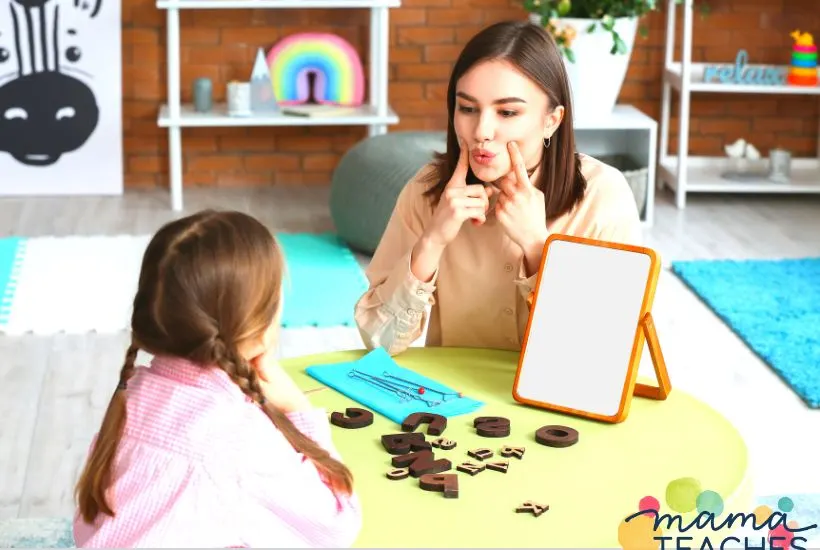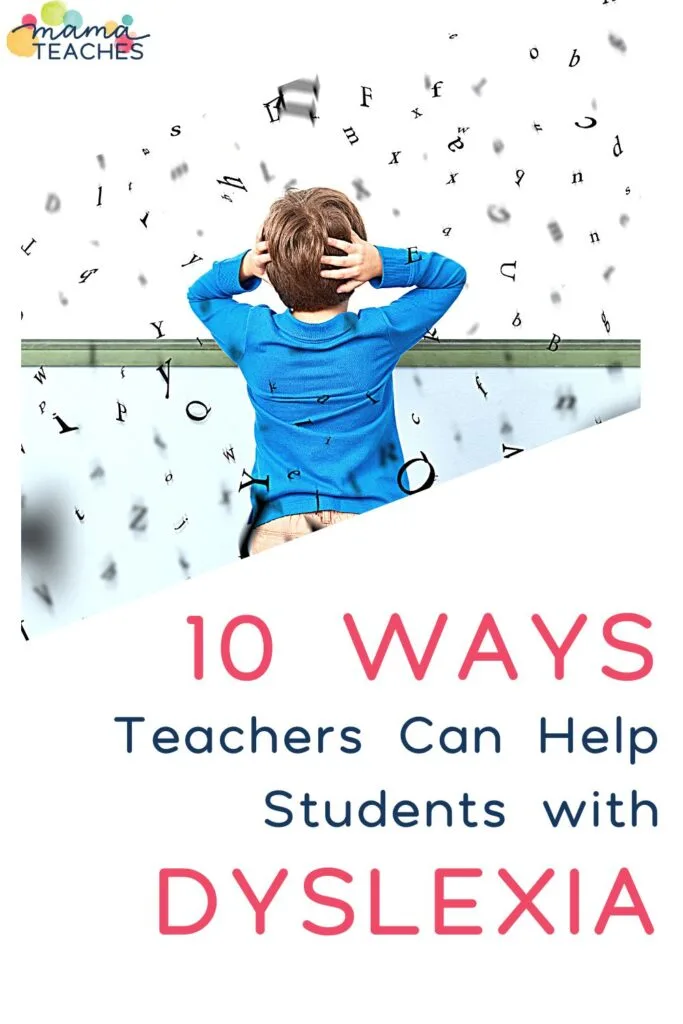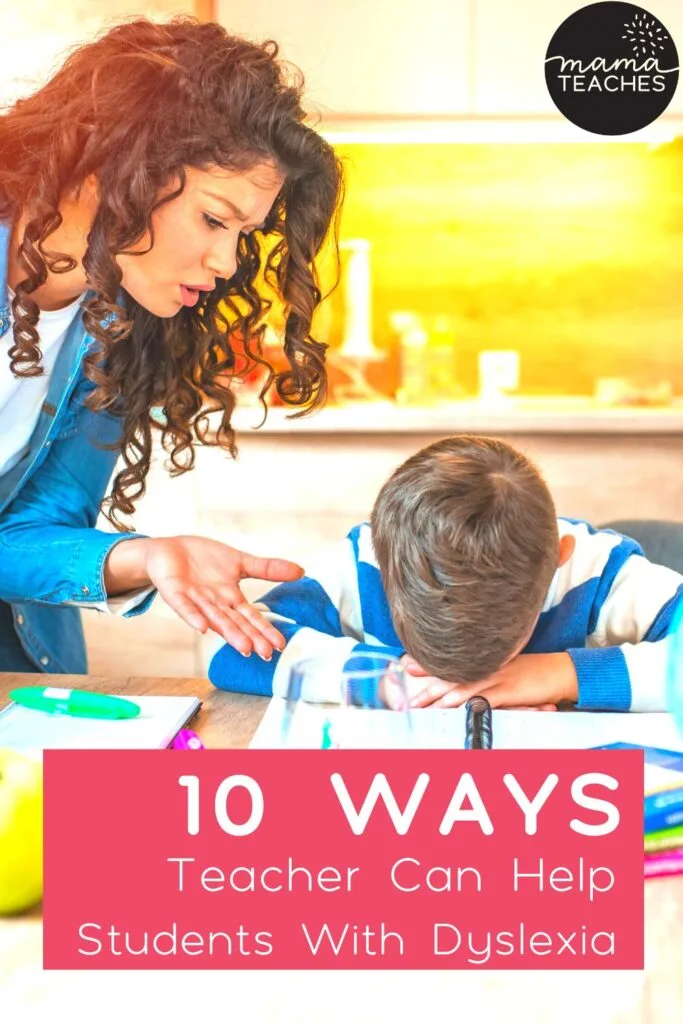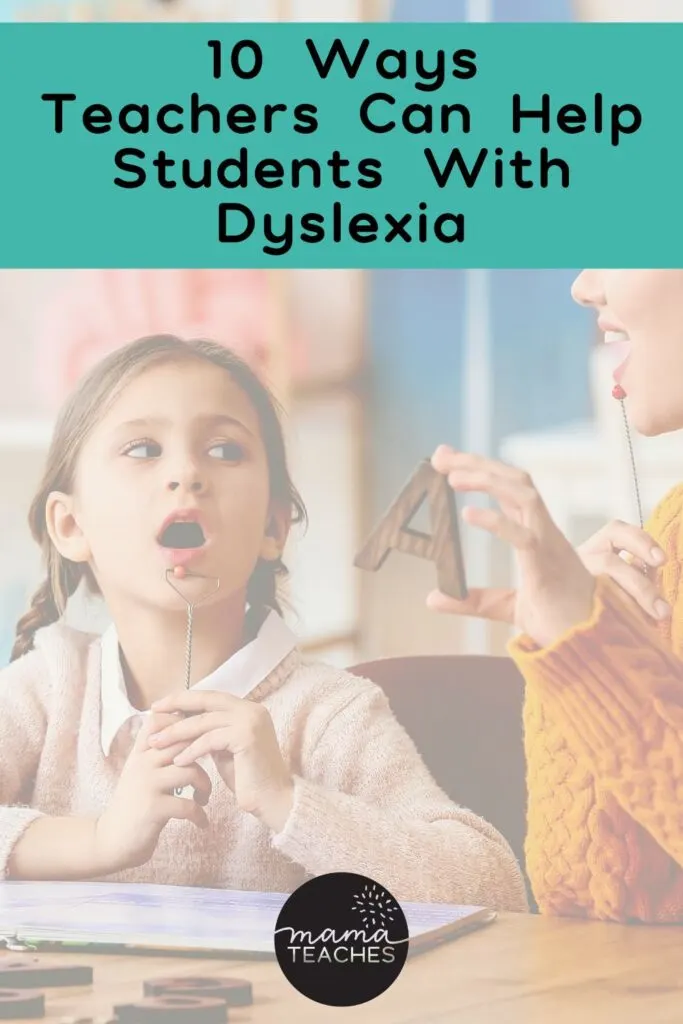Try these ten concrete ways to help students with dyslexia.
These tips will make a huge difference!

This article contains affiliate links to things that you might like.
Helping Students with Dyslexia
These ten ideas will help your students and help make you a better teacher.
It’s a win-win!
1. Recommend Audiobooks
Audiobooks are a fantastic alternative to books in print.
They help students with dyslexia focus on content without getting tripped up decoding words.
Encourage all your students to give audiobooks a try, either on their own or as a companion to books in print.
Your students will likely finish more books this way!
2. Be on the Lookout for Co-occurring Issues
A student with dyslexia may have other issues with which they are struggling; it’s common for learning differences to appear in groups of 2 or more.
Be on the lookout for dysgraphia, dyscalculia, and ADHD, so your students can get the help they need.
3. Break Assignments into Chunks
If you give an assignment (especially one with multiple facets or steps), your students may not know where to begin.
They will be overwhelmed and immobilized.
Instead, break large or complicated assignments into bite-size chunks.
For example, instead of assigning 50 pages of reading a week, assign ten pages a night.
Don’t say, “Write a book report.” Break the assignment into steps (ideally using a graphic organizer or anchor chart), so the students can work through the assignment over time.

4. Teach Reading with a Systematic, Multi-Sensory Approach
For a student with dyslexia, not all reading programs are created equal.
They need a systematic, multi-sensory approach.
Dyslexia will never disappear, but it can be managed with the right tools and training.
I highly recommend the Orton-Gillingham Method and the Wilson Reading Program.
Both approaches need patience, frequency, and consistency to be effective.
5. Increase Wait Time
If someone asked you if you would be willing to spend 60 minutes watching a video that would guarantee you would be a more effective teacher for struggling students, would you watch it?
That video is “How Difficult Can This Be? The F.A.T. City Workshop.” The video is a bit dated, but the content is solid gold.
It’s filled with one epiphany moment after another.
The best takeaway?
Increase the wait time in your classroom or homeschool.
6. Equip Yourself by Reading Overcoming Dyslexia
The number of books on dyslexia and reading assistance is dizzying.
How do you sort through them all?
You start by reading the best one.
Without a doubt, that book is Overcoming Dyslexia by Dr. Sally Shaywitz.
It’s comprehensive, research-based, and practical.
It’s a must-read!

7. Check Out The Dyslexia Training Institute
If you have questions about ways to help students with dyslexia, you need a place to go for answers.
The Dyslexia Training Institute provides education and training for parents and teachers.
Dr. Kelli Sandman-Hurley is the co-founder of the Dyslexia Training Insitute, and she helped our family immensely when our son was diagnosed with dyslexia.
8. Teach Structured Word Inquiry
Structured word inquiry is the process of examining a word.
It helps students with dyslexia, but all students enjoy it!
What does it involve:
- Ask, “What about the word is challenging or interesting?”
- Ask the student to use it in a sentence (help as needed).
- Go over multiple meanings of the word, if any.
- Look at the word’s morphology (prefixes, suffixes, and root word).
- Look up its etymology. What language does it come from? Are there similar words from that language?
- Examine how it’s pronounced (its phonology).
9. Avoid Fancy Fonts
Fancy fonts are very hard for students with dyslexia to read.
Avoid them at all costs!

10. Forget Popcorn Reading
Reading aloud is intimidating enough for a student with dyslexia.
When you add randomness to the process, you make reading aloud ten times worse.
Randomly calling on students to read (also called “popcorn reading”) is not kind to students with dyslexia.
Do you like it when someone tries to catch you off guard?
Probably not.
Extend courtesy to your students by giving them fair warning when reading is required.
Ways to Help Students with Dyslexia Succeed in Class
These ten simple ways will make you a better teacher and help your students immensely.
Why not try one, two, or all ten?
